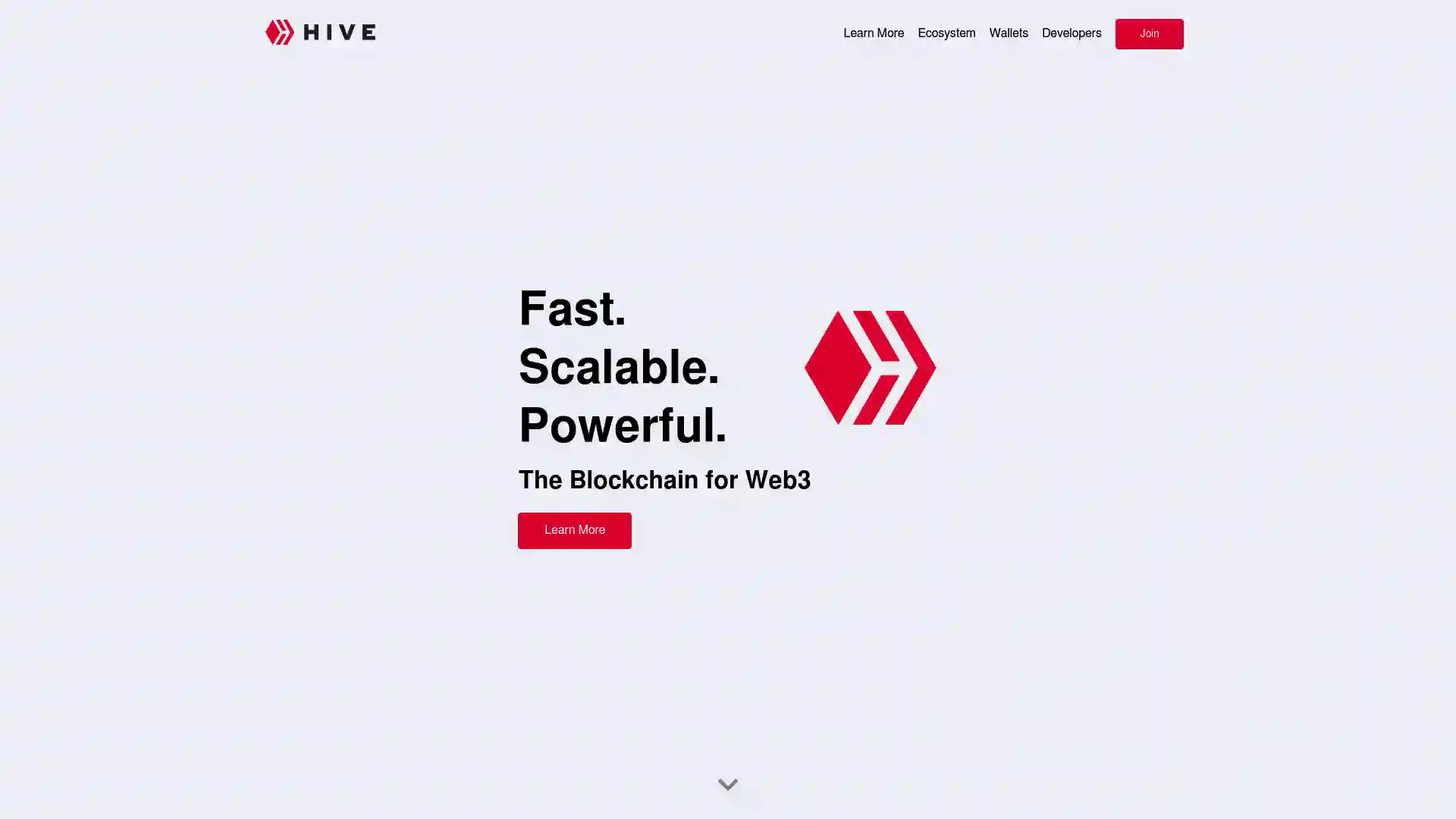Hive (HIVE)
Hive is a decentralized information-sharing network with a blockchain-based financial ledger, utilizing the Delegated Proof of Stake (DPoS) protocol. It originated from a hard fork of the Steem blockchain when a segment of the community opted to create their own independent chain. Hive supports a variety of information-sharing applications.
Overview
Hive is a and forward-thinking decentralized blockchain ecosystem built on the DPoS protocol. It is designed to be highly scalable, independent of central authority, and addresses the challenges of mass adoption and versatile use. Hive facilitates easy storage and retrieval of immutable data, featuring three-second, fee-less transactions. It aims to store vast amounts of content for time-based monetization without traditional transaction fees. Instead, Hive employs a stake-based Resource Credit mechanism.

| Ticker | HIVE |
| Category | Smart Contract Platform |
| Website | https://hive.io/ |
| @hiveblocks | |
| Telegram | hiveblockchain |
| https://www.reddit.com/r/hivenetwork/ |
Hive enhances accessibility in blockchain technology and content publishing by distributing a portion of the inflation to content creators and consumers through the Proof-of-Brain (PoB) concept. Participants can earn by engaging in activities such as blogging, curating, and interacting with dapps and games. This decentralized system ensures content remains accessible and retains its integrity.
Since its creation, Hive has grown steadily, supported by numerous dapps, APIs, and front-ends that facilitate easy access to data and transactions. Hive was established as a community-driven, decentralized fork to uphold strong community values and eliminate the influence of Steemit Inc. This move followed the sale of Steemit Inc to the Tron Foundation in February 2020.
Features
Fast
Transactions on Hive are completed in less than three seconds.
Scalable
Hive boasts a future-proof resource bandwidth and storage system.
Powerful
The platform has been thoroughly tested for four years by numerous applications, communities, and projects worldwide.
Hive technology and scalability
Hive supports high transaction volumes with fast three-second block times and fee-less transactions, making it ideal for interactive applications. It employs a second-layer architecture to distribute application loading across side-chains, enhancing scalability beyond traditional smart-contract networks. This design allows applications to allocate additional CPU resources as needed, avoiding congestion while benefiting from a common blockchain backbone for data integrity.
Hive governance and software development
Hive was founded by a diverse group of community members, developers, and investors committed to decentralization. Without a central team or company, Hive operates globally with nodes, stakeholders, and contributors from various countries. Hive employs decentralized governance for software development and protocol upgrades, using the DPoS consensus protocol. Stake-weighted voting elects witnesses, who must agree on changes to the primary protocol, ensuring a stable foundation while allowing second-layer applications to innovate. All protocol changes are developed transparently in an open-source environment. Hive was launched on March 20, 2020, as a decentralized information-sharing network, continuing its commitment to open-source social media blockchain initiatives.
